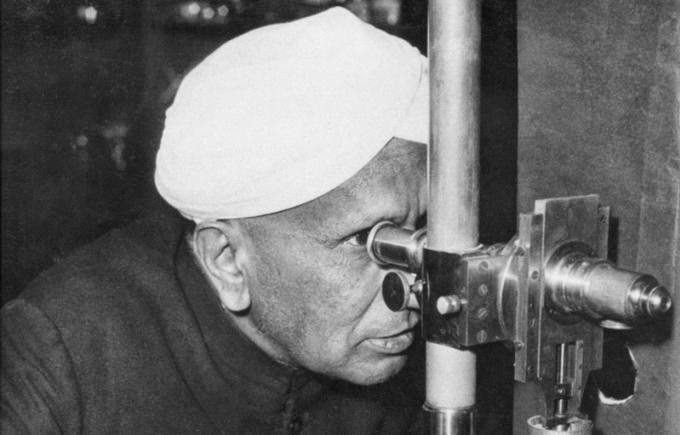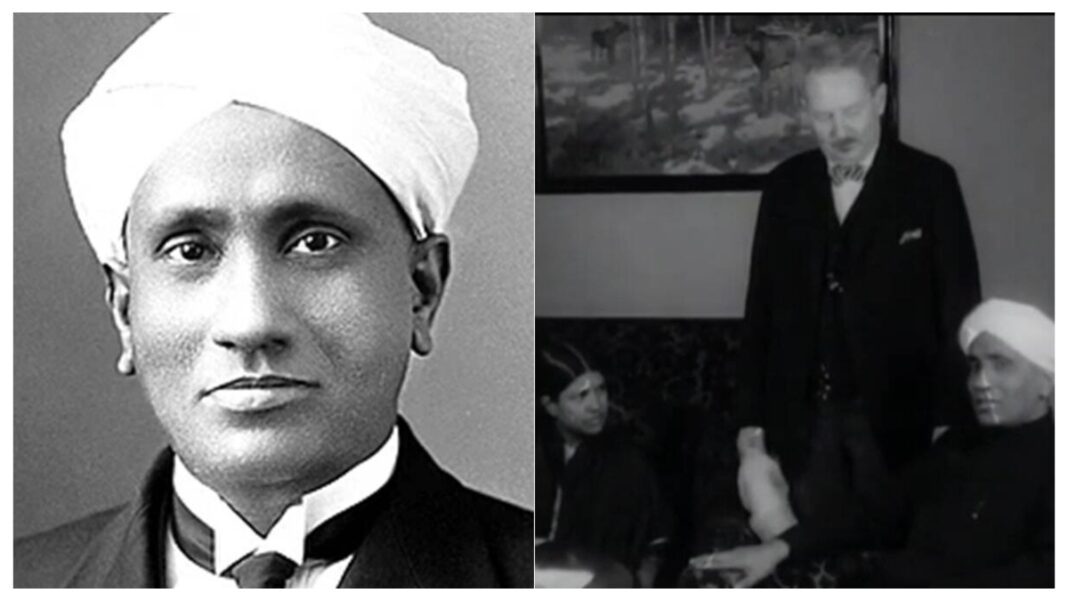INDIA. As the whole world is celebrating the 132nd birthday of Nobel Prize winner Sir C.V. Raman on 7th November(some sources say its 8th), it is quite interesting to know about his contribution to science. So, here is my small ode to one of the greatest scientists in the history of India.
Raman : A Child Prodigy
Raman was the first Indian scientist to receive the Nobel Prize (Science) in 1930. He was born on 7th November 1888 in a village near Tiruchirapalli, in South India. Raman’s father was a lecturer and his mother was a house-wife. He was the second child of his parents. Unlike his father, Raman was not physically strong. But, his mental abilities were phenomenal. He was a child prodigy and a voracious reader. Edwin Arnold’s book ‘The Light of Asia’ inspired him most along with many science books. At the age of 11, Raman passed out of school, and after spending two years in college, he went to Presidency College, Madras (now Chennai).
Raman passed his graduation exam and stood first in his University. For his further studies, he wanted to go to England and prepare for the Indian Civil Service (ICS). But, he failed the medical test and was declared unfit. Due to this, he couldn’t travel to England. Least discouraged by the rejection, Raman enrolled in a post-graduation course in India and chose physics as his major subject. He passed his post-graduation exam and also secured the first position in his university.
Government official and a researcher
After completing post-graduation, Raman cleared the Financial Civil Service (FCS) examination. Interestingly, Raman stood first in the FCS exam as well. After that, the British government posted him in Calcutta (now Kolkata) as an Assistant Accountant General (AAG) with a salary of Rs.400 ($5.41) per month.
Indian Association for the Cultivation of Science (IACS) was founded in 1876 which had the sole aim of promoting researches for young Indian scientists. Soon, he joined the institute for the research work. Before Raman, nobody showed interest in that place. So, when Raman joined the institute, everyone was excited to work with him. Raman then devoted his time to his government duty as well as to his research. Soon, he began to publish his findings in leading scientific journals like ‘Nature‘, ‘The Philosophical Magazine‘, and ‘The Physical Review‘.
The voyage and the discovery
It was in 1921 when Raman was returning to India from England. He boarded the ship ‘S.S. Narkunda’ and soon
it sailed through the Mediterranean sea. Raman was a keen observer. He soon became fascinated by the deep blue color of the Mediterranean sea. Thus, he asked a question to himself, “Why the sea is blue?”
Lord Rayleigh had already explained the blue color of the sky and reasoned that the blueness of the sea is due to the ‘mere reflection of the sky!’ However, Raman was not convinced by his explanation. Soon, he began to think about all his experiments which he had performed in ICAS. While he was contemplating, the two terms ‘frequency’ and ‘polarization’ of light were continuously coming into his mind.
Rayleigh explained the scattering of light in terms of polarization changes. His explanation made frequency constant. But, Raman thought differently. He incorporated both changes in frequency and polarization of light. He completely radicalized the scattering principle and explained it in the quantum mechanics principle. When the ship touched the Indian shore, Raman was ready to publish his new findings in ‘Nature‘.
Nobel Prize for Sir C.V. Raman
Raman soon began to perform a series of experiments on light. On February 28, 1928, he found the scattering experiment result which was based on his theory of the natural phenomenon of scattering. He proved that the molecules present in seawater scatter all other frequencies of sunlight. We perceive the blueness of seawater as blue color reaches our eyes. This principle is known as the ‘Raman Scattering‘ principle.
Soon, everybody got to know about his experiment, and the whole world admired his ingenuity and perseverance. Finally, in 1930, Raman was awarded the Nobel prize for his discovery. At that time, his laboratories were not equipped with modern equipment. Yet, his insight brought him to the breakthrough discovery.

The British Government also recognized his contributions and conferred a knighthood to him. Soon, many societies honored Raman with medals and honorary doctorates. His discovery made a large impact not only on physics but also on biology, chemistry, molecular structure, space, and astronomy.
Raman was a man of grit and sheer determination. Let me tell you about a small episode of his life that shows his scientific spirit. One day, Raman found one of his students looking dejected. When he went to him and asked him about his melancholy, the student said, “Professor, my competitor in England who is working on the same problem has a 100kW lamp whereas I have only a 10 kW one!” Raman smiled and replied, “Never mind. Put a 100KW brain on it!”



